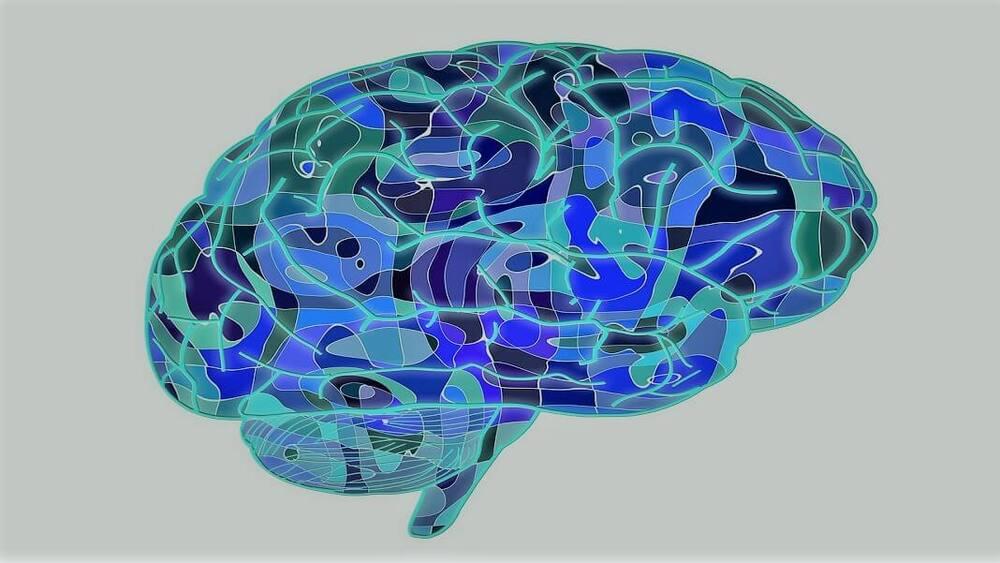AI used to discover abaucin, an effective drug against A baumannii, bacteria that can cause dangerous infections.



In science fiction, space crews are often spared the boredom and inconvenience of long-distance space travel by being placed into a state of suspended animation. Now this goal may have come a step closer after scientists showed that hibernation can be artificially triggered in rodents using ultrasonic pulses.
The advance is seen as significant because the technique was effective in rats – animals that do not naturally hibernate. This raises the prospect that humans may also retain a vestigial hibernation circuit in the brain that could be artificially reactivated.

After two years of thoroughly exposing James on his lies regarding origin of life research, I finally got the chance to confront him live about the subject…
What happened before the Big Bang? In two of our previous films we examined cyclic cosmologies and time travel universe models. Specially, the Gott and Li Model https://www.youtube.com/watch?v=79LciHWV4Qs) and Penrose’s Conformal Cyclic Cosmology https://www.youtube.com/watch?v=FVDJJVoTx7s). Recently Beth Gould and Niayesh Afshordi of the Perimeter Institute for Theoretical Physics have fused these two models together to create a startling new vision of the universe. In this film they explain their new proposal, known as Periodic Time Cosmology.
0:00 Introduction.
0:45 NIayesh’s story.
1:15 Beth’s story.
2:25 relativity.
3:26 Gott & Li model.
6:23 origins of the PTC model.
8:17 PTC periodic time cosmology.
10:55 Penrose cyclic model.
13:01 Sir Roger Penrose.
14:19 CCC and PTC
15:45 conformal rescaling and the CMB
17:28 assumptions.
18:41 why a time loop?
20:11 empirical test.
23:96 predcitions.
26:19 inflation vs PTC
30:22 gravitational waves.
31:40 cycles and the 2nd law.
32:54 paradoxes.
34:08 causality.
35:17 immortality in a cyclic universe.
38:02 eternal return.
39:21 quantum gravity.
39:57 conclusion.
Elizabeth Gould has asked to make this clarification in the written text ” “Despite the availability of infinite time in the periodic time model, this doesn’t lead to thermalization in a typical time-evolution scenario, and therefore doesn’t, strictly speaking, solve the problem related to thermalization in the power spectrum. The reason for this is that, unlike bounce models with a net expansion each cycle, our model has an effective contraction during the conformal phases. Periodic time, therefore, has a unique character in which it reuses the power spectrum from the previous cycles, which is confined to a given form due to the constraints of the system, rather than removing the old power spectrum and needing to produce a new one.”

I recently got a call from my IT department asking why I was driving a significant amount of Azure spending in the past month. Before we were in the cloud, this type of question never came up. Rather, it was me asking IT for more servers to run my workloads. Whether or not I was using our on-premise computing resources was irrelevant—that is, until I ran out.
My experience is not at all unique. In our modern, post-cloud world, every organization has gone from unmetered, unfettered access to compute resources to a metered, easy-to-inspect, pay-by-the-second cloud spending nightmare. What we gained in endlessly scalable, elastic compute, we lost in our ability to run workloads without anyone watching. This new reality demands an elevated level of fiscal responsibility and shared ownership, especially as it relates to analytics.
The cloud computing pay-per-use model means organizations can no longer run workloads without considering the costs those workloads generate. It’s now imperative that organizations manage their cloud spending to stay competitive.
Physicist Sean Carroll explains the discovery of Higgs Boson in simple terms. Credit-ICE at Dartmouth.


There has been shock around the world at the rapid rate of progress with ChatGPT and other artificial intelligence created with what’s known as large language models (LLMs). These systems can produce text that seems to display thought, understanding, and even creativity.
But can these systems really think and understand? This is not a question that can be answered through technological advance, but careful philosophical analysis and argument tell us the answer is no. And without working through these philosophical issues, we will never fully comprehend the dangers and benefits of the AI revolution.
In 1950, the father of modern computing, Alan Turing, published a paper that laid out a way of determining whether a computer thinks. This is now called “the Turing test.” Turing imagined a human being engaged in conversation with two interlocutors hidden from view: one another human being, the other a computer. The game is to work out which is which.

The root cause is frustratingly simple: one gene mutation, which affects a critical protein that helps support skin integrity. The single genetic error makes the illness a perfect candidate for gene therapy. Yet with the skin already fragile, injections—a current standard for gene therapy—are hard to tolerate.
What about a genetic moisturizer instead?
This month, the FDA approved the first rub-on gene therapy. Similar to aloe vera for treating sunburns, the therapy comes in a gel that’s gently massaged onto blisters and wounds to help with healing. Dubbed Vyjuvek, it directly delivers healthy copies of the mutated gene onto damaged skin. An alternative version is configured into eye drops to reconstruct the eye’s delicate architecture to better support sight.